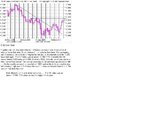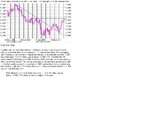Contrarian caution
By Mark Hulbert, MarketWatch
Last Update: 12:01 AM ET May 24, 2005
ANNANDALE, Va. (MarketWatch) -- What will the stock market do for an encore?
The stock market over the past month or so has been adhering quite closely to a contrarian script, rallying impressively in the face of significant pessimism. (Read archived column.)
As of Monday night's close, the (SPX: news, chart, profile) S&P 500 and the (COMP: news, chart, profile) Nasdaq Composite index had climbed back to two-month highs.
What does the sentiment picture say is likely to happen from here?
I wish I could be as upbeat today as I was in late April. But I can't. The latest data from the Hulbert Financial Digest paint a significantly less bullish picture than a month ago.
Consider the Hulbert Stock Newsletter Sentiment Index (HSNSI), which measures the average stock market exposure among a subset of short-term market timers. As of Monday's close, the HSNSI stands at 21.8 percent.
To be sure, since this is far below the index's all-time high of 79.7 percent, the current reading is no where close to being so high as to trigger a contrarian-based sell signal. So at least to this extent, today's sentiment picture can still be interpreted bullishly.
At a minimum, however, there are several storm clouds on the horizon. And it behooves us to pay them close attention.
Consider first how the current reading contrasts with that of a month ago. On April 20, for example, the HSNSI stood at negative 28.3 percent. That means that the average short-term market timer has increased his exposure to the stock market by more than 50 percentage points in just over a month's time. Contrarians would be more confident in the sustainability of the market's rally if advisers had not been so quick to jump on the bullish bandwagon.
Another storm cloud emerges when we focus on the contrast between the HSNSI's current level and where it stood the last time the stock market was trading at current levels.
On April 12, when the ($INDU: news, chart, profile) Dow Jones Industrials Average closed at 10,508, only slightly below the 10,524 level at which it closed Monday, the HSNSI stood at negative 1.6 percent.
That is some 23 percentage points lower than where it is today. This contrast is not an encouraging sign, since it suggests that the average adviser considers the Dow Industrials at the 10,500 level to be less of a cause for concern today than six weeks ago.
A third - and related - storm cloud emerges when we contrast the stock market's current level with where it stood on March 15 - the last time the HSNSI was at, more or less, today's level. It turns out that the Dow Industrials on that day closed at 10,745 -- more than 200 points higher than where it closed on Monday.
This is a good measure of how much more bullish the average adviser has become.
Contrarians no doubt would differ over whether these brewing storm clouds are sufficient reasons in and of themselves to reduce equity exposures.
But they undoubtedly would all agree that it will be very crucial to see how advisers react to the stock market's next correction. If they are quick to jump back on the bearish bandwagon, then the rally's sentiment foundation will once again become strong.
But if they are hesitant to reduce exposure in the face of that correction, then the contrarian forecast will be for a return of bad weather.


